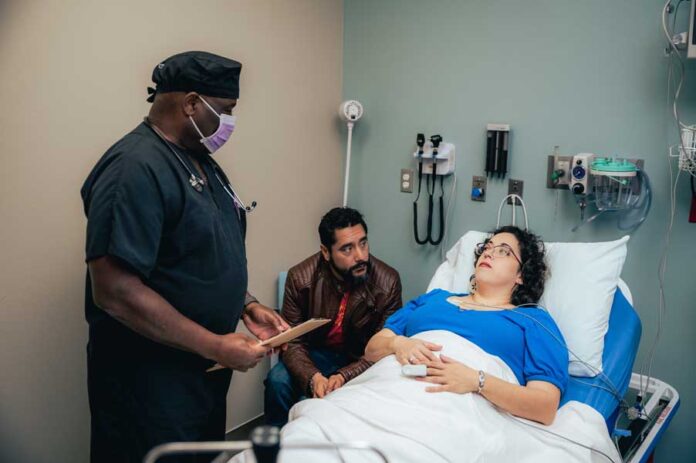In emergencies, access to healthcare is crucial, yet concerns about costs can be daunting, especially for those without insurance coverage. This article explores the landscape of emergency room prices for uninsured individuals, offering insights into what affects these costs, alternatives to traditional ER visits, and strategies for managing expenses.
The Structure of Emergency Room Costs
Emergency room costs are typically broken down into several categories:
- Facility Fees: These are charges for the use of the ER itself, including the cost of the room, nursing care, and general services provided by the hospital. Facility fees can vary significantly depending on the hospital and the region.
- Physician Fees: These are charges for the services provided by doctors and specialists. This can include the cost of seeing an emergency physician, consulting with specialists, and any procedures they perform.
- Diagnostic Tests: ER visits often require various diagnostic tests such as blood tests, X-rays, MRIs, or CT scans. Each of these tests comes with its own cost, which can add up quickly.
- Treatment and Procedures: Any treatments or procedures performed during the ER visit, such as stitches, casting broken bones, or administering medications, will incur additional costs.
- Medications: The cost of medications administered during the ER visit, such as pain relievers, antibiotics, or other necessary drugs.
The Basics of Emergency Room Costs
Emergency room (ER) visits are inherently expensive due to the nature of the services provided. ERs are equipped to handle life-threatening conditions and operate 24/7, necessitating a high level of readiness and a wide range of medical personnel and equipment. This level of preparedness comes at a significant cost, which is often passed on to the patient.
Factors Influencing Emergency Room Costs
Several factors contribute to the variability and often high costs of emergency room visits, including:
- Severity of Condition: The complexity and severity of the medical issue significantly impact the cost. Minor injuries or illnesses typically cost less than severe or life-threatening conditions that require extensive diagnostics and treatments.
- Diagnostic Tests: The number and type of diagnostic tests performed, such as blood tests, X-rays, CT scans, or MRIs, can add significantly to the overall cost. These tests are often necessary to accurately diagnose the condition.
- Treatments and Procedures: The treatments and procedures administered in the ER, such as sutures, casts, IV medications, or surgery, vary in cost. More intensive procedures and the use of advanced medical equipment increase the expense.
- Geographic Location: The cost of healthcare services, including ER visits, varies widely by region. Urban areas and regions with higher living costs generally have higher healthcare costs compared to rural areas.
- Hospital Type: The type of hospital can also influence costs. Private hospitals, teaching hospitals, and hospitals in affluent areas often charge more than public or community hospitals.
- Time Spent in ER: The duration of your stay in the ER can affect the cost, especially if you require prolonged observation or treatment.
Typical Costs of Emergency Room Visits Without Insurance
- Base Costs: Discuss the typical range of costs for emergency room visits, including initial consultation fees and basic diagnostic tests.
- Additional Charges: Explain potential extra charges for procedures, medications, imaging, and specialist consultations.
- Regional Variations: Highlight how costs can vary based on location, such as urban versus rural areas.
Factors Influencing Emergency Room Prices
- Severity of Condition: Explain how the seriousness of the medical condition affects costs.
- Facility Type: Compare costs between different types of facilities (public hospitals, private hospitals, urgent care centers).
- Time of Visit: Discuss how time of day and day of the week can impact costs.
- Diagnostic Tests and Treatments: Detail how the necessity and complexity of tests and treatments influence overall expenses.
- Geographic Location: Explore how regional healthcare economics affect pricing.
Alternatives to Traditional Emergency Room Visits
- Urgent Care Centers: Explain when and why urgent care centers may be suitable alternatives.
- Telemedicine: Discuss the role of telemedicine in providing remote medical consultations for non-life-threatening conditions.
- Retail Clinics: Explore the services offered by retail clinics for minor medical issues.
- Community Health Centers: Highlight the services and affordability of community health centers for uninsured individuals.
Managing Emergency Healthcare Expenses
- Negotiating Costs: Provide tips on how to negotiate medical bills and explore financial assistance options.
- Payment Plans: Discuss the feasibility of setting up payment plans with healthcare providers.
- Medical Credit Cards: Explain the pros and cons of using medical credit cards for emergency healthcare expenses.
- Health Savings Accounts (HSAs): Advise on using HSAs to save for potential medical emergencies.
- Preventive Care: Emphasize the importance of preventive care in reducing the likelihood of costly emergency visits.
Resources and Support for Uninsured Individuals
- Government Programs: Outline available state and federal programs that provide assistance for medical expenses.
- Charitable Organizations: List charitable organizations and foundations that offer financial aid or discounted healthcare services.
- Patient Advocacy: Provide information on how patient advocacy groups can assist uninsured individuals in navigating healthcare costs.
Conclusion
Navigating emergency room prices without insurance can be challenging, but understanding the factors at play and exploring alternative care options can help mitigate costs. By proactively managing healthcare expenses and utilizing available resources, uninsured individuals can access necessary medical care without facing insurmountable financial burdens.

